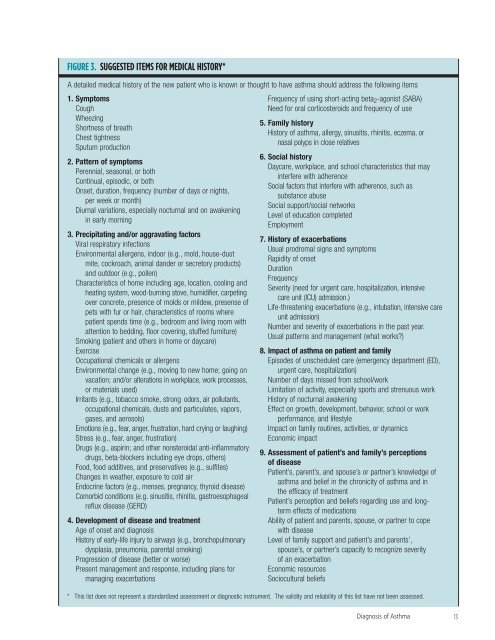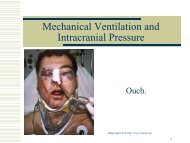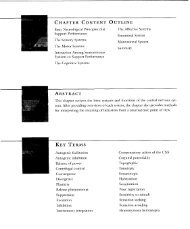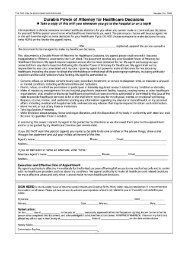Guidelines for the Diagnosis and Management of Asthma
Guidelines for the Diagnosis and Management of Asthma
Guidelines for the Diagnosis and Management of Asthma
You also want an ePaper? Increase the reach of your titles
YUMPU automatically turns print PDFs into web optimized ePapers that Google loves.
FIGURE 3. SUGGESTED ITEMS FOR MEDICAL HISTORY*<br />
A detailed medical history <strong>of</strong> <strong>the</strong> new patient who is known or thought to have asthma should address <strong>the</strong> following items<br />
1. Symptoms<br />
Cough<br />
Wheezing<br />
Shortness <strong>of</strong> breath<br />
Chest tightness<br />
Sputum production<br />
2. Pattern <strong>of</strong> symptoms<br />
Perennial, seasonal, or both<br />
Continual, episodic, or both<br />
Onset, duration, frequency (number <strong>of</strong> days or nights,<br />
per week or month)<br />
Diurnal variations, especially nocturnal <strong>and</strong> on awakening<br />
in early morning<br />
3. Precipitating <strong>and</strong>/or aggravating factors<br />
Viral respiratory infections<br />
Environmental allergens, indoor (e.g., mold, house-dust<br />
mite, cockroach, animal d<strong>and</strong>er or secretory products)<br />
<strong>and</strong> outdoor (e.g., pollen)<br />
Characteristics <strong>of</strong> home including age, location, cooling <strong>and</strong><br />
heating system, wood-burning stove, humidifier, carpeting<br />
over concrete, presence <strong>of</strong> molds or mildew, presense <strong>of</strong><br />
pets with fur or hair, characteristics <strong>of</strong> rooms where<br />
patient spends time (e.g., bedroom <strong>and</strong> living room with<br />
attention to bedding, floor covering, stuffed furniture)<br />
Smoking (patient <strong>and</strong> o<strong>the</strong>rs in home or daycare)<br />
Exercise<br />
Occupational chemicals or allergens<br />
Environmental change (e.g., moving to new home; going on<br />
vacation; <strong>and</strong>/or alterations in workplace, work processes,<br />
or materials used)<br />
Irritants (e.g., tobacco smoke, strong odors, air pollutants,<br />
occupational chemicals, dusts <strong>and</strong> particulates, vapors,<br />
gases, <strong>and</strong> aerosols)<br />
Emotions (e.g., fear, anger, frustration, hard crying or laughing)<br />
Stress (e.g., fear, anger, frustration)<br />
Drugs (e.g., aspirin; <strong>and</strong> o<strong>the</strong>r nonsteroidal anti-inflammatory<br />
drugs, beta-blockers including eye drops, o<strong>the</strong>rs)<br />
Food, food additives, <strong>and</strong> preservatives (e.g., sulfites)<br />
Changes in wea<strong>the</strong>r, exposure to cold air<br />
Endocrine factors (e.g., menses, pregnancy, thyroid disease)<br />
Comorbid conditions (e.g. sinusitis, rhinitis, gastroesophageal<br />
reflux disease (GERD)<br />
4. Development <strong>of</strong> disease <strong>and</strong> treatment<br />
Age <strong>of</strong> onset <strong>and</strong> diagnosis<br />
History <strong>of</strong> early-life injury to airways (e.g., bronchopulmonary<br />
dysplasia, pneumonia, parental smoking)<br />
Progression <strong>of</strong> disease (better or worse)<br />
Present management <strong>and</strong> response, including plans <strong>for</strong><br />
managing exacerbations<br />
Frequency <strong>of</strong> using short-acting beta 2 -agonist (SABA)<br />
Need <strong>for</strong> oral corticosteroids <strong>and</strong> frequency <strong>of</strong> use<br />
5. Family history<br />
History <strong>of</strong> asthma, allergy, sinusitis, rhinitis, eczema, or<br />
nasal polyps in close relatives<br />
6. Social history<br />
Daycare, workplace, <strong>and</strong> school characteristics that may<br />
interfere with adherence<br />
Social factors that interfere with adherence, such as<br />
substance abuse<br />
Social support/social networks<br />
Level <strong>of</strong> education completed<br />
Employment<br />
7. History <strong>of</strong> exacerbations<br />
Usual prodromal signs <strong>and</strong> symptoms<br />
Rapidity <strong>of</strong> onset<br />
Duration<br />
Frequency<br />
Severity (need <strong>for</strong> urgent care, hospitalization, intensive<br />
care unit (ICU) admission.)<br />
Life-threatening exacerbations (e.g., intubation, intensive care<br />
unit admission)<br />
Number <strong>and</strong> severity <strong>of</strong> exacerbations in <strong>the</strong> past year.<br />
Usual patterns <strong>and</strong> management (what works?)<br />
8. Impact <strong>of</strong> asthma on patient <strong>and</strong> family<br />
Episodes <strong>of</strong> unscheduled care (emergency department (ED),<br />
urgent care, hospitalization)<br />
Number <strong>of</strong> days missed from school/work<br />
Limitation <strong>of</strong> activity, especially sports <strong>and</strong> strenuous work<br />
History <strong>of</strong> nocturnal awakening<br />
Effect on growth, development, behavior, school or work<br />
per<strong>for</strong>mance, <strong>and</strong> lifestyle<br />
Impact on family routines, activities, or dynamics<br />
Economic impact<br />
9. Assessment <strong>of</strong> patient’s <strong>and</strong> family’s perceptions<br />
<strong>of</strong> disease<br />
Patient’s, parent’s, <strong>and</strong> spouse’s or partner’s knowledge <strong>of</strong><br />
asthma <strong>and</strong> belief in <strong>the</strong> chronicity <strong>of</strong> asthma <strong>and</strong> in<br />
<strong>the</strong> efficacy <strong>of</strong> treatment<br />
Patient’s perception <strong>and</strong> beliefs regarding use <strong>and</strong> longterm<br />
effects <strong>of</strong> medications<br />
Ability <strong>of</strong> patient <strong>and</strong> parents, spouse, or partner to cope<br />
with disease<br />
Level <strong>of</strong> family support <strong>and</strong> patient’s <strong>and</strong> parents’,<br />
spouse’s, or partner’s capacity to recognize severity<br />
<strong>of</strong> an exacerbation<br />
Economic resources<br />
Sociocultural beliefs<br />
* This list does not represent a st<strong>and</strong>ardized assessment or diagnostic instrument. The validity <strong>and</strong> reliability <strong>of</strong> this list have not been assessed.<br />
<strong>Diagnosis</strong> <strong>of</strong> <strong>Asthma</strong><br />
13





